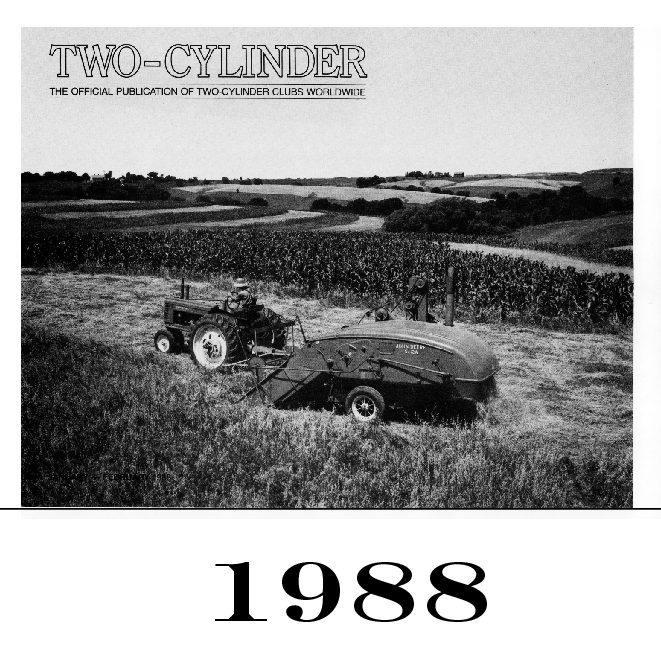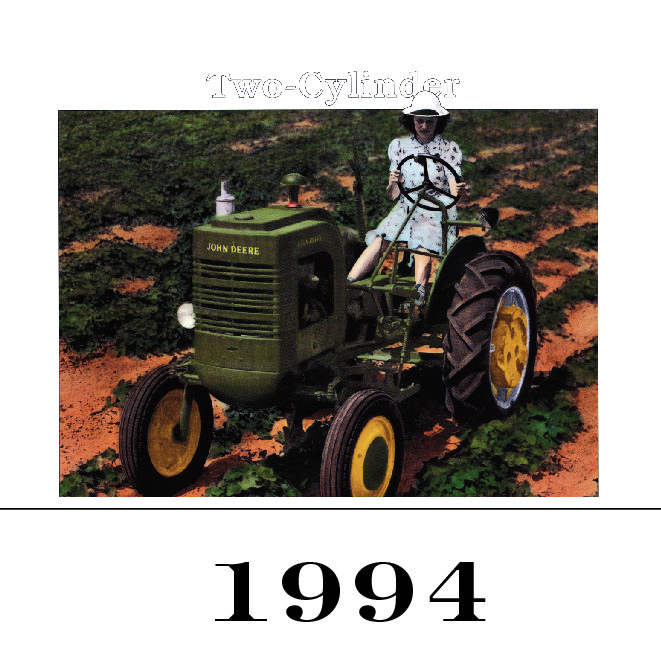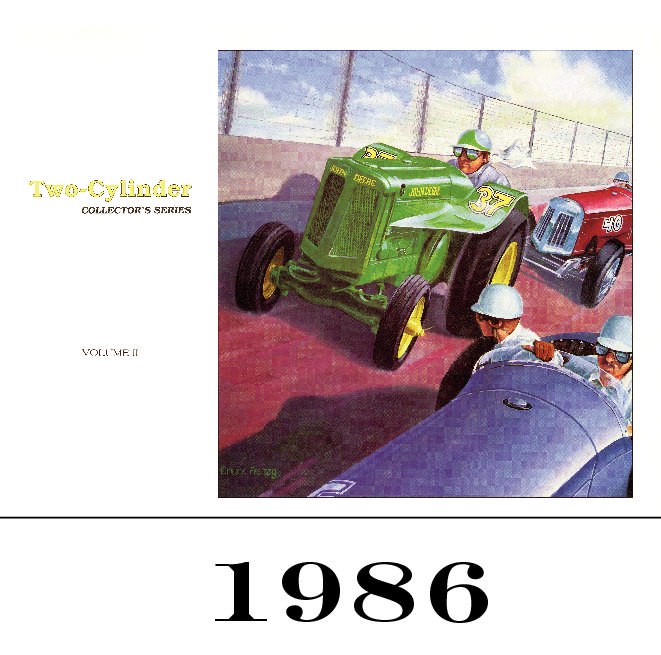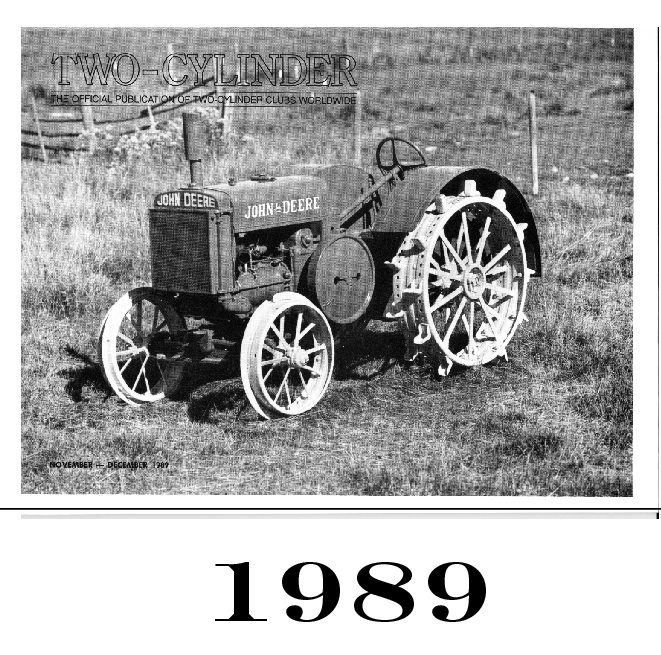
One Year Subscription Renewal
August 17, 2018
Two-Cylinder Tough Gray
August 20, 2018$14.95
Late-Styled Model “A” & “B” Tractors
Model “GPWT”
Model “GM”
Model “730”
Model “DI”
Model “330”
LATE-STYLED MODEL “A” & “B” TRACTORS: On October 8, 9, and 10, 1946, a major sales meeting was held at Waterloo, Iowa, to introduce the “New Models “A” and “B” Tractors to high level Deere & Company and John Deere Branch House personnel. Among those attending the meeting were Deere President C.D. Wiman, renowned Deere & Company engineer Theo Brown, Branch House and Factory Managers and General Sales Managers, and key management people from the John Deere Tractor Company at Waterloo. A total of 148 people, making the meeting one of the most significant tractor introductions in the company’s history.
MODEL “GPWT” TRACTOR: The story of the General-Purpose Wide-Tread Tractor is among the most colorful and interesting of any in the history of John Deere Tractors. The start of regular production of the “GP” Wide-Tread began with serial number 400000 in August of 1929, but the first General-Purpose-type John Deere Tractor with a wide tread was shipped in early 1927. The first efforts with a wide-tread design occurred prior to the production of the General-Purpose model. Existing early photographs show them to be preproduction Model “C” Wide-Treads.
MODEL “GM” TRACTOR: In the summer of 1938 the Models “A” and “B” Tractors were “styled.” During the next two years they received a number of mechanical improvements including six-speed transmissions and larger engines. The Model “H” Tractor was introduced in 1939, with styled features, the same year that the Model “D” was “styled.” The Model “G” continued to be “unstyled,” and maintained basically the same specifications since its introduction in 1937. Even through 1941 it didn’t look like the rest of the John Deere General-Purpose Tractor lineup. Behind the scenes, however, the tractor was being changed. Engineering development and tooling changeover to provide a modernized Model “G” had been underway for months. The tractor would go into production in early 1942.
The last unstyled “G” was built on December 22, 1941. It was serial number 12192, shipped to Sidney, Nebraska, on December 27, 1941. Serial number plates 12193 through 12999 were discarded and never used.
MODEL “730” TRACTOR: The Model “730s” are among the most respected John Deere Two-Cylinder Tractors ever made, yet production duration for domestic tractors spanned only two years. I (Jack Cherry, editor) was present at the assembly line as the last of the Model “730s” built for domestic use rolled off the line. The date was June 15, 1960. The assembly line would continue to build “730” Diesel Tractors into 1961 for export.
MODEL “DI” TRACTOR: Model “D” Tractors have been available with industrial options since 1925. The Model “DI”, however, did not officially appear on the scene until 1935. This article deals with all versions of the Model “D” Industrial Tractors, but focuses primarily on the “DI” of 1935–1941.
MODEL “330” TRACTOR: The Model “330” is somewhat of an unusual fit in the “30” Series of John Deere Two-Cylinder Tractors. The “830” clearly appears to be larger than the “730”, for example. The “630” is smaller yet, but noticeably larger than the “530”. The Dubuque-built “430” is a step smaller than the Waterloo-built “530”. And the “330” Standard and Utility Tractors are, well, almost identical in size to their “430” counterparts! In fact, the “330” Standard is a wee bit longer than the “430” Standard. The only dimension where the “430” is larger is a couple of inches in width when tread is set at minimum.
- Information-packed, educational, and entertaining Feature Articles; with photos and accuracy unmatched elsewhere!
- Each CD contains all of the Feature Articles for an ENTIRE YEAR, and is enclosed in its own unique sleeve!
- Searchable PDF format! What does that mean? You’ll be able to easily locate specific subjects in the article, “zoom-in” on photos (in color and b/w), and print off any part (or the entire article) for your personal use.
CD-ROMS are for COMPUTER-USE ONLY and WILL NOT PLAY on traditional television or radio entertainment systems!!! Opened CDs are not eligible for refund or return. Computer System Operating Requirements: Adobe Reader 8.1.3 • Adobe Reader 9 • Windows Vista • Windows XP • Windows 2000 SP4 and higher • Mac Intel/PowerPC 10.4.11 – 10.5.6 • Mac Intel 10.4.4 – 10.4.10 • Mac PowerPC 10.4.3 – 10.4.10, and higher
| Amount | Sealed Case of Six, Single |
|---|





Reviews
There are no reviews yet.